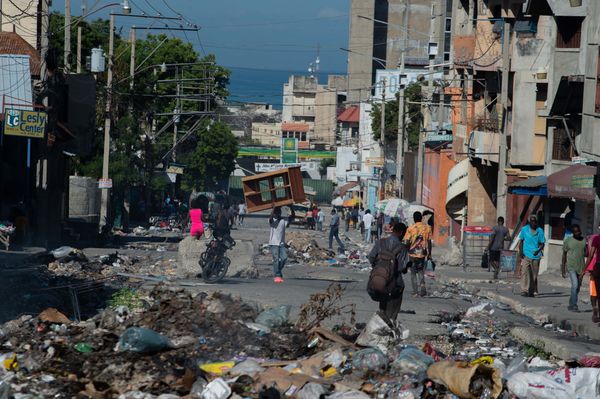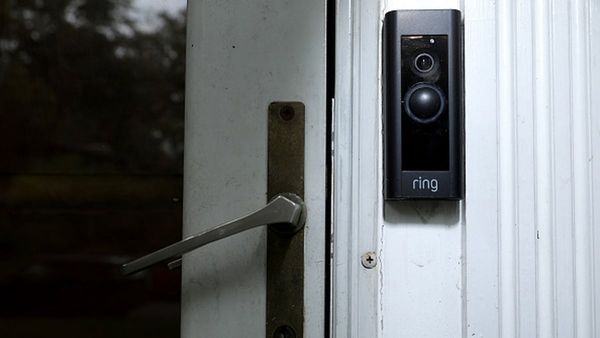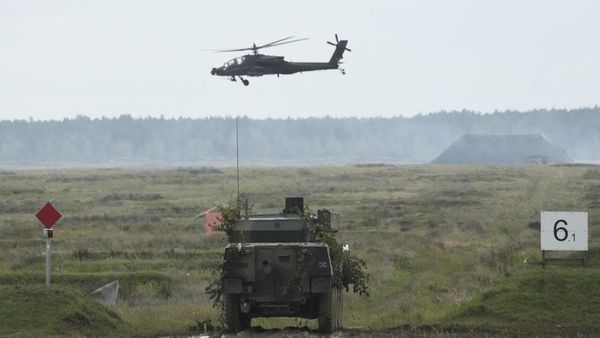Hurricane Melissa is heading for Cuba after it made landfall as a category 5 storm in Jamaica, battering the country with ferocious winds, heavy flood waters and landslides as one of the strongest Atlantic hurricanes in history.
Cuba’s president warned the country was in for a “very difficult night” as the category 4 storm headed for the island’s second-largest city, Santiago de Cuba.
“Melissa is expected to remain a powerful hurricane when it moves across Cuba, the Bahamas, and near Bermuda,” the US National Hurricane Center said in an advisory.
In Jamaica, minister of local government Desmond Mckenzie, said on Tuesday afternoon that the south-western parish of St Elizabeth was “under water” and that at least three families were trapped in their homes in the community of Black River in western Jamaica. Emergency services were struggling to reach due them to the dangerous conditions, he said. He declined to confirm whether there were any deaths.
Describing the hurricane as “one of the worst experiences that [Jamaica] has ever encountered”, Mckenzie said more than 530,000 people were without electricity and close to 15,000 people were in storm shelters.
“The damage to St Elizabeth is extensive, based on what we have seen. Sections of Clarendon are also is experiencing severe conditions,” he said at a press briefing on Tuesday.
“Our infrastructure has been severely compromised. St Elizabeth is the breadbasket of the country and that has taken a beating. The entire Jamaica has felt the brunt of Melissa,” he added.
He also warned that Jamaica was not out of the woods and that the system was still active.
Videos and photographs published by local newspapers painted a devastating portrait of the impact: roads transformed into raging rivers, downed power lines and trees, and roofs ripped off buildings by the power of the winds. “Hurricane Melissa is wreaking absolute havoc on Jamaica’s breadbasket parish,” the Jamaica Observer reported from St Elizabeth in the south-west of the island.
The prime minister, Andrew Holness, posted on X on Tuesday afternoon: “Our thoughts and prayers are with our citizens in that part of the island as we give you the assurance that we will be with you throughout, mobilising support and relief.” A few hours later he officially declared the Caribbean country “a disaster area” as a result of widespread flooding, landslides and infrastructure damage.
The slow-moving colossus is the most intense hurricane to hit Jamaica since records began in 1851 and will linger over the island for hours before turning north-east.
Matthew Cappucci, an American meteorologist who flew through the eye of the storm on Sunday, called the experience “scientifically stunning and horrifying from a humanitarian standpoint”. “Millions of people could awaken Wednesday to devastation – shattered communities, an unrecognisable landscape and scarring that will take decades to mend,” he wrote in the Washington Post.
In Portmore, a community on Jamaica’s south-eastern coast, the Mercy Corps adviser Colin Bogle said he had been woken “by a loud explosion – and everything went dark”. “Outside, trees are being violently tossed in the wind, and the noise is relentless,” he added.
In a televised address to the nation, Miguel Díaz-Canel, the president of Cuba warned citizens the storm could be “one of the most severe – or possibly the strongest” ever to hit the island. “We want to emphasise … the magnitude of this event,” he said, urging Cubans not to return to their homes from shelters. Wind speeds dropped to 145mph as the storm moved across Jamaica, making it a category 4 storm, but it was still expected to cause widespread infrastructure damage and flooding. Díaz-Canel said more than 500,000 people had been evacuated from its path.
Jamaica’s government said it had done all it could to prepare, issuing a mandatory evacuation of low-lying areas, as it warned of severe impact for the nation’s 2.8 million people.
The streets in the capital, Kingston, remained largely empty on Tuesday, with footage showing trees bent over by the force of the wind.
“There is no infrastructure in the region that can withstand a category 5,” said Holness. “The question now is the speed of recovery. That’s the challenge.”
Category 5 is the highest on the Saffir-Simpson scale, with sustained winds exceeding 157mph (250km/h). The US National Hurricane Center reported that Melissa carried sustained wind speeds of 185mph (298km/h), with higher gusts.
“It’s a catastrophic situation expected in Jamaica,” the World Meteorological Organization’s tropical cyclone specialist, Anne-Claire Fontan, told a Geneva press briefing. “For Jamaica, it will be the storm of the century for sure.”
Heavy rain knocked out power for some residents in Portland, St Thomas, St Andrew, St Elizabeth and Westmoreland, including in popular tourist destinations such as Negril and Treasure Beach.
One particularly badly hit area was Manchester parish, which has faced days of torrential rain and violent winds as the storm approached.
One resident, Emma Simms, 37, said she had made a makeshift shelter within a cupboard in her house, where she intended to relocate with her children, 4 and 1.
“I’ve tried to make it nice and comfortable. There’s snacks in there, there’s water in there,” she said. “If things sound like the house isn’t going to hold up, then I’m just going to go in there. We’re going to stick a mattress on top of us and just keep [my children] happy until it passes. Try to make it fun and exciting.”
Simms, a data analyst and transport consultant, moved to Jamaica from the UK six years ago and experienced her first Jamaican hurricane when Beryl devastated the country last summer. “I feel like this is worse than Beryl already and it hasn’t even landed yet,” she said.
“I feel I’ve got people to protect, like I need to keep it together. But my belly has been feeling different than it has for the last few days. I can definitely feel the anxiety in me.”
The chief meteorologist at AccuWeather, Jonathan Porter, said Melissa would be the strongest hurricane to hit Jamaica directly in recorded history.
Landslides were reported before the storm, with officials in Jamaica cautioning that the cleanup and damage assessment would be slow. The storm entered near St Elizabeth parish in the south and was expected to exit in the north, forecasters said.
“Total structural failure is possible near the path of Melissa’s centre,” said the US National Hurricane Center, which is based in Miami.
A life-threatening storm surge of up to 13ft (4 metres) was expected across southern Jamaica, with officials concerned about the impact on some hospitals along the coastline. The health minister, Christopher Tufton, said some patients were being relocated from the ground floor to the second floor, “and [we] hope that will suffice for any surge that will take place”.
The storm is already thought to have caused seven deaths in the Caribbean, including three in Jamaica, three in Haiti and one in the Dominican Republic, where another person remains missing.
Melissa is so unusually strong that the US military said it had moved its forces – likely to be ships and aircraft – in the vicinity of the storm to safer areas.
Climate scientists have said the intensification of Hurricane Melissa – with winds doubling from 70mph to 140mph in just a day – is probably a symptom of the rapid heating of the world’s oceans, part of the human-driven climate crisis.
Leanne Archer, a research associate in climate extremes at the University of Bristol, said: “There has been a perfect storm of conditions leading to the colossal strength of Hurricane Melissa: a warm ocean which has fuelled its rapid intensification over the last few days, but it is also moving slowly, meaning more rain can fall while it moves across land.
“Most of these conditions have been supercharged by the extra heat in our oceans and atmosphere due to climate change. A warmer ocean means more energy and more strength; and more moisture in the warmer atmosphere means more rain can fall with a higher intensity.”
Last year, the world’s oceans were the warmest on record, continuing a recent trend of record-breaking marine heat. And a 2023 study found that Atlantic hurricanes are now more than twice as likely as before to intensify rapidly from minor storms to powerful and catastrophic events.
After Jamaica, Melissa is forecast to cross Cuba and the Bahamas by Wednesday.
The UN’s International Organization for Migration (IOM) said on Tuesday that it would send solar lamps, blankets, indoor tents, generators and other items from its logistics hub in Barbados to Jamaica as soon as the storm crossed the island.
“Many people are likely to be displaced from their homes and in urgent need of shelter and relief,” said Natasha Greaves, interim head for IOM Jamaica.







